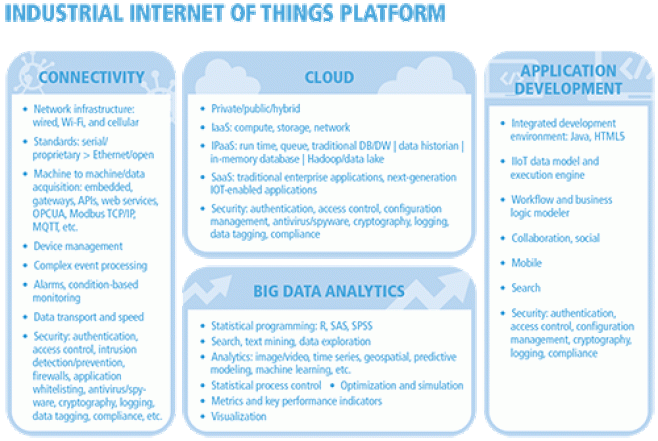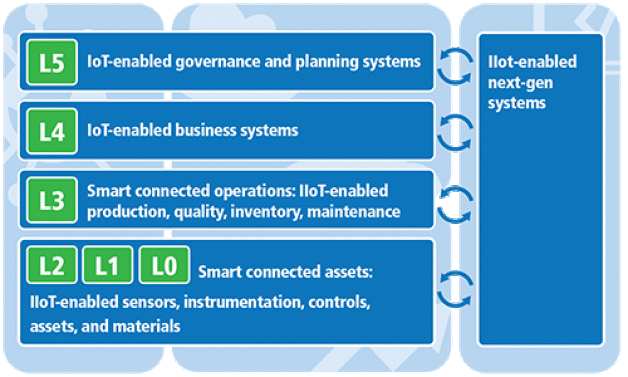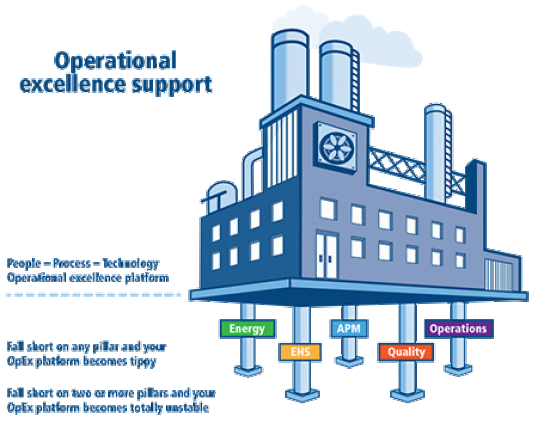This post was authored by Matthew Littlefield, president and principal analyst of LNS Research.
In many ways I liken the current Industrial Internet of Things (IIoT) hype to the original dot-com bubble in the late 1990s. Although short-term expectations well exceeded short-term gains, no one can deny the long-term transformative power of the Internet.
The IIoT may not bring immediate transformation, but by 2025, when we take a step back to see how far we have come, I believe the resounding response will be that the revolution was real.
In the industrial sector, we have the benefit and curse of technology refresh rates typically measured in decades, and technology selection processes typically measured in months or years. This is a benefit, because the technology we buy is built to last and provides a return on investment (ROI) well beyond that of other industries. It is also a curse. Since we do not get new technology very often, when we get the chance we often bite off more than we can chew, are paralyzed by fear of the unknown, or seek out the new shiny toy.
Perhaps no other new technology comes with more promise to manufacturing executives than big data analytics. It is a new technology that captures the imagination and offers the ability to find previously unfindable data correlations that will return untold benefits in cost reduction, quality improvement, supply chain efficiency, and more. In the face of such promise, it is critical that executives do not get caught up in this hype and instead focus on solving business problems, not acquiring a new shiny tool.
Same old, same old?
For the most part, industrial organizations are still trying to solve the same problems that have been an issue for the past few decades or more. Quality, cost, and customer responsiveness are the goals, and disparate data sources, legacy systems, and no clear ROI are the challenges. The fact that these same issues have proved so intractable in the past is one of the main reasons big data analytics is gaining so much attention today. Companies are frustrated with the lack of progress being made with legacy tools and see big data analytics as a new approach.
That is not to say that some industrial companies today do not view big data analytics as a path toward solving new problems with new technology. The skills gap is well documented in the industrial sector, and enabling new models for knowledge capture and remote service is one of the relatively new industry challenges being addressed with big data analytics. And although it is still a small minority, 5 percent of manufacturers or less, some companies also see big data analytics as a way to move from being not only an industrial company, but also a digital company. Companies use these new capabilities to offer either new value-added services, such as zero downtime or performance benchmarking, or new business models, such as uptime as a service or power by the hour. Examples of companies already having made this transition include Heidelberg Press (large printing presses), Konecranes (large cranes and lifting equipment), Fanuc (robotics), and Trane (industrial heating, ventilation, air conditioning equipment and service).

Big data analytics in manufacturing
Visualization and analytics are not new to the industrial space. Traditionally these capabilities were delivered by either pure play enterprise manufacturing intelligence (EMI) vendors or as EMI products from enterprise resource planning (ERP), manufacturing operations management (MOM), or automation vendors. The types of data that can be analyzed are structured and semistructured data from application databases or data historians and, in some cases, machine data. The types of information that are then presented include production performance data and analysis, such as an asset’s overall equipment effectiveness (OEE), the location of the production line’s bottleneck, or the quality of the product being produced and the financial impact of package overfills and variation. In the case of statistical process control, recommendations can even be made to operators to proactively improve future performance. In every one of these use cases, there is a clear and demonstrable ROI, and in many cases benchmark data has shown these technologies can improve performance in OEE by 10 percent or more.
However, these products and use cases all come up short on the definition and value proposition of industrial big data analytics. First and foremost, big data is about more than just data volume—petabytes alone are not enough. Instead, big data analytics should be thought of in the context of the three Vs: volume, velocity, and variety. Most traditional EMI vendors get high marks on volume, middling marks on velocity, and low marks on variety.
To handle volume, velocity, and variety, companies need to deploy a full big data or, more likely, an IIoT platform that has drivers, gateways, data transport, and edge analytics capabilities to quickly and efficiently capture data. They also need a hybrid (cloud and on-premise) computing environment with a traditional relational database, traditional data historian, in-memory database, and Hadoop capabilities. And finally, they need a data schema that quickly and efficiency brings together different data types like financial transactions, operational transactions, product engineering, simulation, machine data, web data, and geo-spatial data, alongside algorithms that provide traditional manufacturing analytical capabilities and new data science capabilities like neural networks and machine learning.
With this full set of capabilities, industrial companies have access to the full suite of analytics: descriptive, diagnostic, predictive, and prescriptive. All are a big part of enabling smart, connected operations and moving from real-time operations to predictive operations and ultimately to autonomous operations.
Keeping pace with the consumer
The hype created by platforms like IBM’s Watson beating U.S. game show Jeopardy champions is undeniable. It clearly shows the power of new computing. Watson is a question-answering computer system capable of answering questions posed in natural language that IBM’s research team developed in its DeepQA project. As time passes, however, big data analytics will become part of the next-generation applications that span system hierarchy and value chain pillars, just as business intelligence became part of ERP and EMI became part of MOM.
One of the promises of big data analytics and the IIoT is how it will transform traditional hierarchical system models deployed in industrial settings, most often typified by the Purdue or ISA95 standards model. For a number of reasons, the traditional hierarchical model has not led to the shop floor to top floor connectivity that many predicted. Continued adoption of homegrown systems at different layers in the model, different plant versus enterprise networks and security standards, differing data models, and more, all limit the long-term viability of the current architecture.
As legacy and next-generation applications build on top of IIoT platforms, the new applications will be held to a higher standard than ever before in the industrial space. In fact, vendors will not be competing with traditional industry apps, but instead with the usability of consumer-grade apps Uber, Waze, and Amazon. To win in this race, applications will have to take a mobile-first mentality and build social, collaboration, and search tools and intuitive big data analytics into the fabric of the applications. These applications will also likely be targeted at specific use cases that span the system hierarchy described above as well as the different pillars of the value chain. Examples of these types of applications include asset reliability and benchmarking, traceability and genealogy, energy and emissions optimization, and flexible manufacturing or lot size of one.

Operational excellence and industrial transformation
To help executives, operational leaders, and entire organizations capture the value of big data analytics, it is critical to start with strategic initiatives or endeavors, not the desire for technology. Leading companies are building these initiatives around the core capabilities of people, process, and technology. They are using frameworks such operational excellence, which has been developed by many leading process and discrete manufacturing companies for cross-functional collaboration between quality, environmental health and safety, manufacturing operations, asset performance management, and more to bring structure to organization goals.
Using proven models like operational excellence as a foundation, companies can bring together areas of the business like energy, environmental health and safety, quality, manufacturing operations, and asset performance, to begin thinking about industrial transformation. This construct also brings together business leaders and information technology (IT) leaders, often even paving the way for the creation of a cross-functional manufacturing systems group. IT leaders are an invaluable resource in these endeavors.

Born out of necessity and experience, IT leaders are often more focused on avoiding technology adoption for technology’s sake than anyone else in the organization. They are often dogmatic about defining business process transformation, ROI, and risk prior to technology projects. These IT leaders have been through and blamed for more than a few boil-the-ocean ERP projects that were over budget and over time without a clear business case justification other than an executive directive that “we need that to manage the business.”
With a solid foundation for cross-functional collaboration that includes IT and automation leadership, companies should move quickly to start adopting platform tools for big data analytics. When starting, it is important to note that it is impossible to know upfront all of the data that will be needed, which will be valuable, and which will prove unusable. It is also impossible to know or predict all of the potential benefits that will be uncovered. Given this uncertainty, start incrementally with a lean startup approach. Do not be scared of failure, learn fast, adapt fast, and show value fast. This is the opposite of what has been traditionally deployed in manufacturing, with monolithic applications. It is also why so many technology projects have stalled or failed. It is also the reason to ensure that the chosen big data analytics and IIoT platform tools are flexible and adaptable. It cannot take weeks or months to clean data or bring in new data types to the model; by the time the data is ready the question has changed. Data cleansing and data analysis has to happen easily and quickly, think minutes and hours.
The final piece of the puzzle as your company starts down the big data analytics journey is people and training. It is important to start the endeavor with the understanding that your organization will not be able to hire enough data scientists to support the thirst of the organization once it gets started. Instead, organizations will have to “home grow” data science teams and teach manufacturing subject-matter experts just enough data science to be effective and efficient, not vice versus.
Cisco, for example, has a homegrown team of more than 80 data scientists who came from the supply chain organization and were given two years of training. Luckily, industrial companies are not starting from scratch; they have an existing template of how to build programs for teaching manufacturing experts adjacent tools sets. Just as 20 years ago, Six Sigma took over the manufacturing world and taught folks just enough finance and statistics to drive cost and variability out of the system, the industry will need to start a new big data analytics skills revolution. Companies will have to invest in employees, and employees will also have to invest in themselves to move the whole industry forward and make big data analytics a reality.

About the Author
Matthew Littlefield is president and principal analyst of LNS Research, an industry analyst firm focused on operational excellence and industrial transformation. His research spans the industrial value chain and examines how next-generation technologies like the IIoT are delivering business benefits.
A version of this article also was published at InTech magazine.



